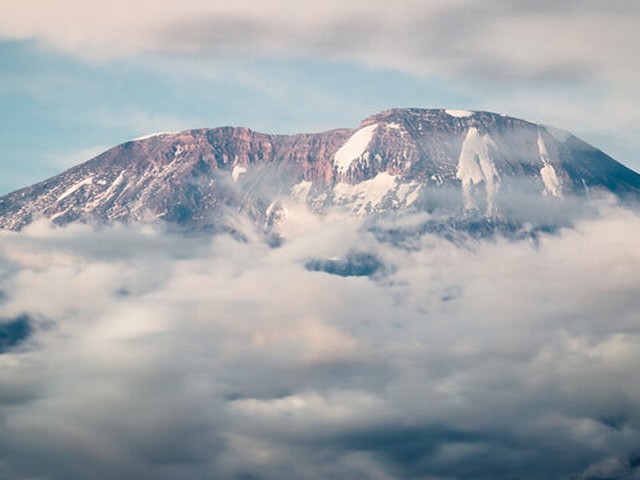Learn About Kilimanjaro’s Ecosystem During Your Trek
Introduction: Discover the Natural Wonders of Mount Kilimanjaro
Embarking on a trek up Mount Kilimanjaro is not just an adventure; it’s a profound journey through one of the most biologically and geographically diverse ecosystems on the planet. At the Kilimanjaro Centre for Trekking and Ecotourism (KCTE), we believe that understanding the unique ecosystem of this majestic mountain can significantly enrich your trekking experience. This post will guide you through the fascinating environmental tapestry that makes Kilimanjaro a world-class destination for nature lovers and adventure seekers alike.
The Majestic Layers of Kilimanjaro’s Ecosystem
The Cultivated Lower Slopes
As you begin your ascent from the base of Mount Kilimanjaro, you’ll pass through lush, cultivated lands where local communities grow crops like coffee, bananas, and maize. This zone provides a perfect introduction to the human-environment interaction and the sustainable practices that are vital for conservation.
Montane Forests: A Biodiversity Hotspot
Climbing higher, the air cools and thickens with moisture, welcoming you into the dense montane forests. This misty habitat is teeming with life. From the chattering calls of colobus monkeys to the vibrant plumage of the Hartlaub’s turaco, the montane forests are a birdwatcher’s paradise. The towering trees draped in moss and the occasional drizzle give this forest a mystical, almost magical feel.
The Heath and Moorland
Transitioning out of the forest, the landscape opens into a world of heath and moorland. This area is characterized by lower temperatures and higher rainfall, creating an otherworldly landscape dominated by giant heathers and lobelias. This zone offers trekkers a unique glimpse into high-altitude vegetation and the adaptations plants need to survive in harsh conditions.
Alpine Desert: Stark and Beautiful
As you approach the 4,000-meter mark, vegetation becomes sparse, entering what is known as the alpine desert. Despite the harsh, rocky environment, life persists here in fascinating forms. From the resilient Kilimanjaro shrew to the occasional sighting of a high-altitude leopard, each life form here has adapted intriguingly to the extreme conditions.
The Icy Summit: The Glaciers of Kilimanjaro
The final zone before reaching the summit is characterized by cold, icy conditions. The glaciers at the peak of Kilimanjaro, though receding, are a stark reminder of the mountain’s ancient climatic history. Witnessing these glaciers up-close is a powerful experience that underscores the importance of understanding and combating climate change.
Ecological Challenges and Conservation Efforts
Mount Kilimanjaro is not only a source of wonder but also a subject of ecological concern. The delicate balance of its ecosystems is threatened by climate change, deforestation, and other human activities. At KCTE, we are deeply committed to preserving Kilimanjaro’s natural beauty. By choosing to trek with us, you contribute to conservation initiatives that protect the mountain’s biodiversity and support local communities.
Why Choose KCTE for Your Kilimanjaro Adventure?
At Kilimanjaro Centre for Trekking and Ecotourism (KCTE), we offer more than just treks; we offer educational journeys designed to deepen your appreciation for nature and inspire responsible tourism. Our expert guides are not only seasoned climbers but also passionate stewards of the environment who are eager to share their knowledge and love for Kilimanjaro’s unique ecosystems.
FAQs About Kilimanjaro’s Ecosystem
What wildlife can I expect to see during my trek?
Expect to encounter a variety of wildlife ranging from the blue monkey and colobus monkeys in the forest zones to smaller species like the Kilimanjaro shrew in the alpine desert. Bird enthusiasts will delight in the diversity of avian species throughout the ascent.
How is climate change affecting Kilimanjaro?
The most visible effect of climate change on Kilimanjaro is the rapid recession of its glaciers. Temperature fluctuations also impact the biodiversity, with some species being forced to move to higher altitudes to find suitable habitats.
How does KCTE contribute to conservation?
KCTE invests a portion of every trekking fee into local conservation efforts, including reforestation projects, wildlife protection initiatives, and community-based education programs on environmental stewardship.
What is the best time of year to experience the ecosystems of Kilimanjaro?
While Kilimanjaro is accessible year-round, the best times to enjoy its ecosystems are during the dry seasons, from late June to October and from late December to early March. These periods offer clearer views and more stable weather conditions for trekking.
Conclusion: Embark on a Journey of Discovery
Climbing Mount Kilimanjaro is a profound experience that goes beyond physical achievement. It’s an opportunity to connect with nature, learn about complex ecological systems, and contribute to the preservation of one of Earth’s most spectacular landscapes. We at Kilimanjaro Centre for Trekking and Ecotourism (KCTE) invite you to join us on this incredible journey. Book your climb with us today and prepare to be inspired by the natural wonders of Kilimanjaro.
Discover the heart of Africa’s tallest mountain. Connect with us, and let’s plan your sustainable journey into the clouds.
Contact Kilimanjaro Centre for Trekking and Ecotourism (KCTE) now, and step into a world of ecological wonders!




